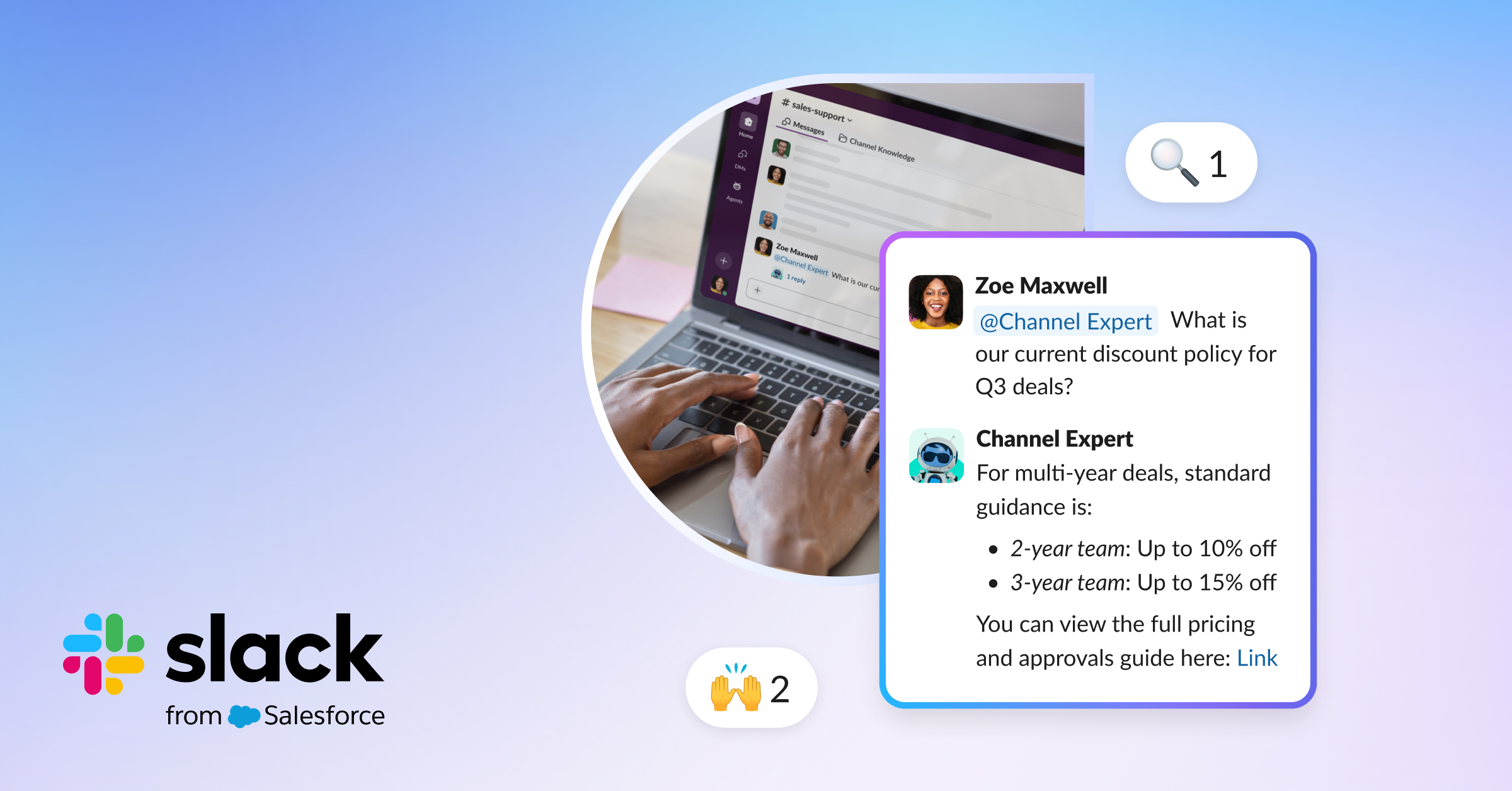New to Slack? If your organization is just getting started, check out our guide to launching Slack.
What are Salesforce channels?
Salesforce channels are Slack channels connected to Salesforce records – like Accounts and Opportunities – that unify real-time team conversations with structured customer data. Available in both Slack and Salesforce, these channels help teams collaborate more effectively, make faster decisions, and drive customer success and revenue growth. 👉 Learn more in our blog post.

Whether you’re closing deals, managing orders, or resolving cases – Salesforce channels help your team move faster and stay aligned.
Launch overview
This resource walks you through the four key phases of launching Salesforce channels – from planning to adoption:
-
Align & Define
-
Design & Implement
-
Onboard & Enable
-
Feedback & Value Measurement
Each phase includes dedicated phase owners responsible for driving key outcomes. Use the table below to identify which individuals or teams in your organization are best suited for each role.
| Role | Responsibilities |
|---|---|
| Executive Sponsor (CRO, Sales Leader) |
Champion the initiative, advocate for adoption |
| Core Project Team (Sales Ops, Enablement, Comms) |
Lead discovery, process design, and communications |
| Admins & Technical Stakeholders (Salesforce & Slack Admins) | Own configuration, troubleshooting, and setup |
| End Users (Sales, CX, Cross-functional Teams) |
Use Salesforce channels in daily workflows, provide feedback |
Phase 1: Align & Define
This foundational phase is focused on aligning stakeholders and defining a clear vision and strategy for launching Salesforce channels. You’ll identify key goals, assess current sales workflows, and determine where Salesforce channels can deliver the greatest impact. By the end of this phase, you’ll know exactly who needs to be involved and where to focus your efforts.
Key outcomes
- Confirm an executive sponsor and align with sales leadership on the value proposition of Salesforce channels
- Conduct discovery sessions with sales leaders to understand current workflows and the desired future-state seller experience
- Define key personas and associated use cases
- Audit existing Slack channels (e.g., Account or Opportunity channels) for potential conversion to Salesforce channels
Phase owners
- Executive Sponsor
- Core Project Team
Resources
- Trailhead: Salesforce channels
- Help article: Collaborate directly in records using Slack
Phase 2: Design & Implement
With your foundation in place, this phase is about turning strategy into action. You’ll design the structure of your Salesforce channels, configure the necessary setup in both Salesforce and Slack, and establish governance to support long-term scalability and adoption. This is where your vision begins to take shape.
Key outcomes
- Design Salesforce channels tied to relevant objects and record layouts
- Configure Sales Cloud to enable channel creation
- Document governance standards for channel management and user provisioning
- Set up new Salesforce channels in Slack
- Define both quantitative and qualitative success metrics
Phase owners
- Core Project Team
- Admins & Technical Stakeholders
Resources
- Guide: Salesforce Channels: Implementation Guide
- Help article: Set up Salesforce channels in your org
- Help article: Use Salesforce channels in Slack
Phase 3: Onboard & Enable
In this phase, the focus shifts to user readiness and a smooth rollout. You’ll equip teams with the right training, clearly communicate what’s changing, and establish feedback channels to capture early insights. The goal is to drive confident adoption and uncover opportunities for continuous improvement.
Key outcomes
- Define a user enablement strategy
- Develop supporting training and onboarding materials
- Communicate changes to end users and provide access to key resources
- Establish mechanisms for capturing user feedback
Phase owners
- Sales Enablement Partners / Comms Team
- Executive Sponsor
Resources
- Guide: Salesforce Channels: Launch Communications
- Guide: Slack for Sales
- Guide: Slack for New Users
- Help Article: Use Salesforce channels in Slack
- Help Article: Use Salesforce channels in your Salesforce records
- Help Article: Communicate in a Salesforce Channel
Phase 4: Feedback & Value Measurement
After launch, it’s essential to close the loop. This phase focuses on capturing user feedback, monitoring adoption, and measuring success against the metrics defined in Phase 2. Teams should establish a lightweight feedback process and regularly connect with the core project team to assess engagement and identify opportunities for optimization.
Key outcomes
- Gather qualitative feedback from end users and key stakeholders (e.g., surveys, focus groups, or interviews)
- Review feedback and adoption metrics against the success criteria defined prior to launch
- Identify opportunities to optimize usage and expand adoption over time
Phase owners
- Core Project Team
- Executive Sponsor










